Fascinated with the human form, sculptor Lisa Hilton creates figures in clay that explore emotions and relationships. See more of her portfolio on her website.
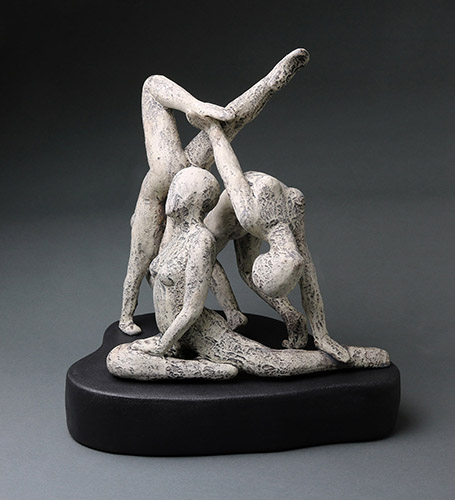
“Finding Balance III e” clay sculpture with painted wood base, 15″ x 13″ x 9.5″
My route to becoming a clay sculptor has been long and circuitous. I’ve been compelled to create in a visually artistic way since as far back as I can remember. Because I was good at math, I studied and worked in the actuarial field. That choice, although gratifying on many levels, didn’t address an unarticulated, deep-seated need.
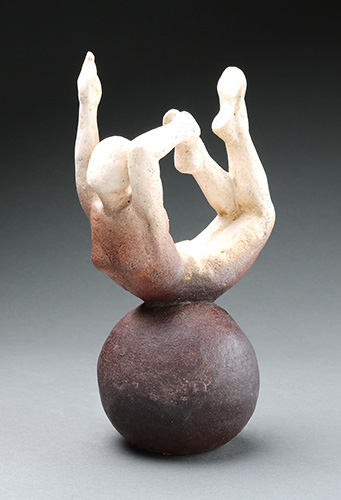
“Moment of Balance” clay sculpture, 9″ x 5″ x 3.5″
When my husband and I decided to start our family, I threw all my energy into the domestic endeavor. I particularly focus on educating, cooking, gardening, decorating, sewing and volunteering.
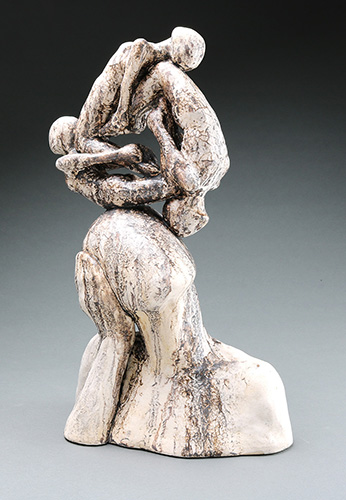
“On My Mind” clay sculpture, 14″ x 11″ x 6″
When my children were in high school, I contemplated my next steps. Of all the possible choices, art was the only one that reached into my soul. I returned to college and earned my BFA. Touching clay felt like coming home.
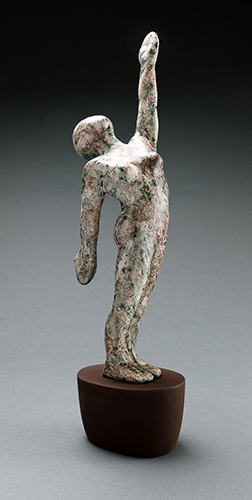
“Inner Power” clay sculpture, 14″ x 4″ x 3″
Although I enjoyed all the other mediums, I felt a different connection to the clay. Its various stages of development provide an endless array of challenges.
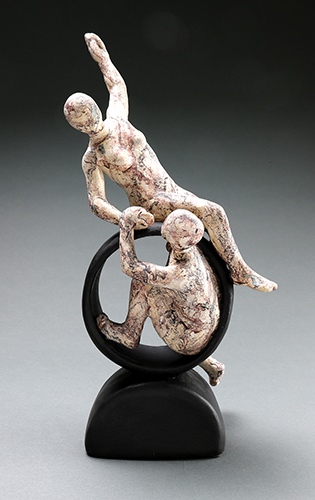
“Help on the Curve” clay sculpture, 15″ x 6.5″ x 6.5″
People are complex creatures. Each individual has a unique combination of characteristics related to talent, virtue, motivation, belief and fear. Added to these innate qualities are familial, educational and cultural influences. I am fascinated by the complicated interaction of these various parts.
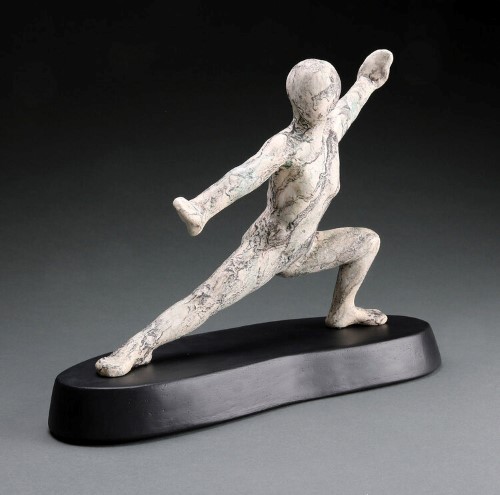
“Finding Balance I e” clay sculpture with painted wood base, 13.5″ x 10″ x 6″
I am awed by the infinite possibilities for an individual person’s interior thoughts, reactions and perceptions. When I add multiple individuals together, the magnitude of possibilities is beyond my imagining.
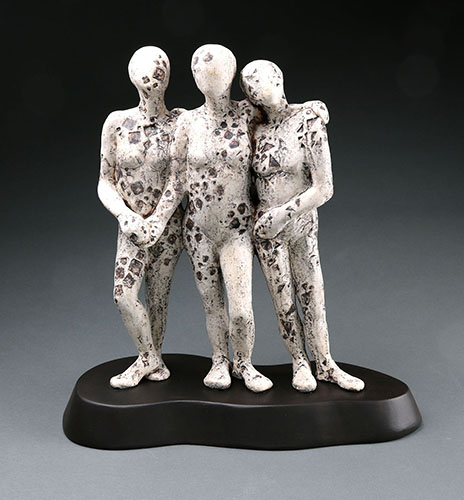
“Shaping One Another” clay sculpture with painted wood base, 14″ x 13.5″ x 5″
I am fascinated by human body language and love to discover how gesture impacts a viewer’s perception of a piece. I’m enthralled by texture and spend a great deal of time experimenting with different methods of creating it. I want surface variation and texture to be expressive avenues for depicting the layers of complexity and depth inherent in every person.
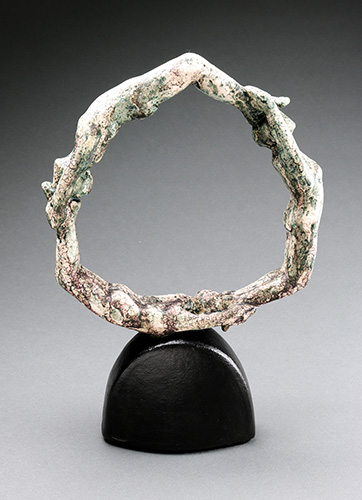
“Finding Balance III c” clay sculpture, 12″ x 8.25″ x 2″
My sculptures are built hollow from small slab parts that are pieced together. I refine each work with additive and reductive alterations. Because I do not utilize an armature, I must be careful to support the piece during drying and firing to control large cracks, loss of parts and warping in undesired ways.
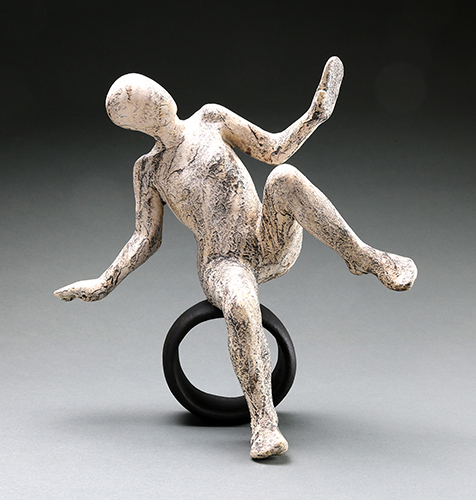
“Finding Balance Through Life’s Curves” clay sculpture, 11″ x 11″ x 6.5″
As protection against these challenges, I form clay supports that are discarded when firing is complete. After the bisque firing to 1850° F, a variety of finishes are applied. After the application of each finish, the piece is fired again, usually to 2170° F.
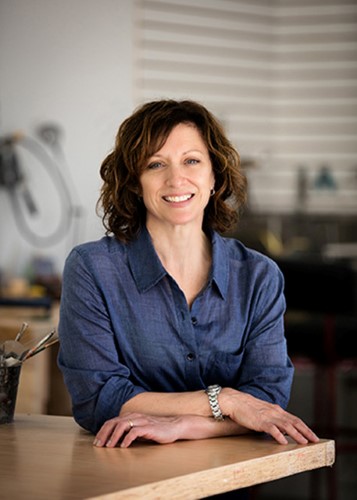
Artist Lisa Hilton
It takes an average of four firings to achieve the final outcome. I believe that a focus on the medium with an eye toward experimentation is essential in the process of my work. I am continually learning from the clay.
Artist Lisa Hilton invites you to follow her on Facebook and Instagram.




Speak Your Mind